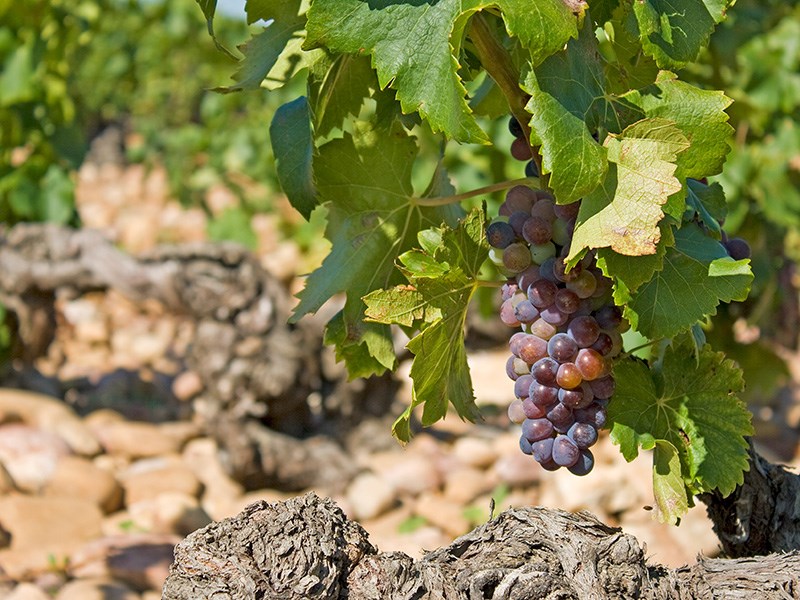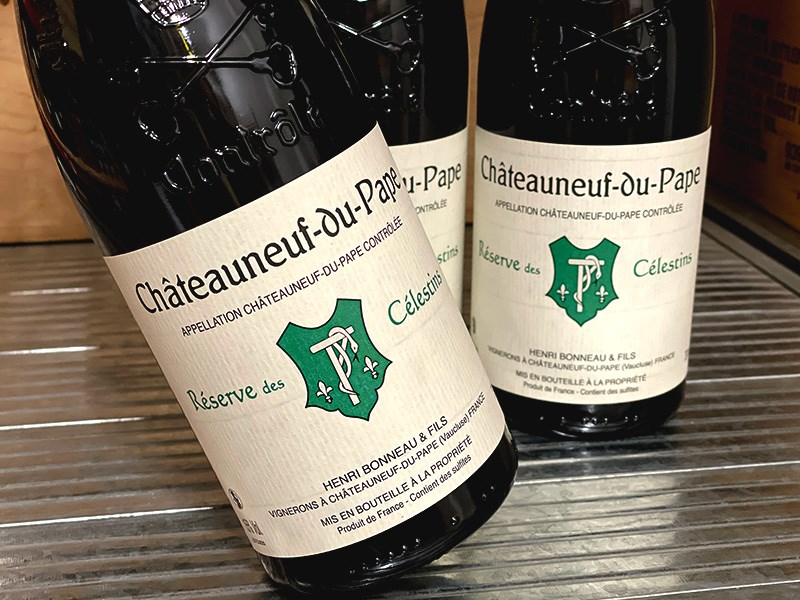Article - Other - 18. October 2021
Welcome To The Southern Rhône - Home Of Châteauneuf-Du-Pape And Grenache
Rhône produces world-class wine in both the modern and traditional sense. Learn more about the appellations, terroir, and grape varieties of Southern Rhône in this article.
Complex Wine From The Rhone Valley With High Quality
France is known worldwide for its fabulous winemaking, and the Rhône Valley is the second- largest wine region here, with around 70,000 hectares of vineyards. In wine terms, the valley is divided into the Southern and Northern Rhône, and this article will focus on the Southern Rhône.
The Southern Rhône is an area led by one appellation and one grape: Châteauneuf-du-Pape and Grenache in its finest style. A unique terroir in Châteauneuf-du-Pape and the Grenache grape's capacity for complexity bring out the quality here more strongly than in the surrounding communes and grapes.
The Gateway To Provence
Many people associate the southern Rhône with the gateway to Provence. The area is dominated by a dry and hot climate throughout most of the growing season, and it is the drought that poses the greatest challenge to wine producers. The only relief is the Mistral wind, which brings air to the grapes as they grow. The soil here is a mixture of sandy deposits, gravel, and clay, as well as the very famous shingle, which is particularly found in Châteauneuf-du-Pape.
Appellations Deliver Delicious And Uncomplicated Wine
The entire region is covered by the Côtes du Rhône appellation, which delivers some of the most drinkable and delicious wines in France – easy and uncomplicated wines to be drunk young. The next level is Village, which produces slightly more powerful and intense wines. The last rung on the quality ladder is the local Cru phenomenon, where the commune has its own appellation like Gigondas or Châteauneuf-du-Pape.
Grenache Dominates The Southern Rhône
The dominant grape in the Southern Rhône is Grenache. Less than 10% of white wine is produced in the whole region, the main grape being the white Grenache. The grape produces wines with great body and high alcohol due to the warm climate. Grenache is a grape that is relatively low in acidity and therefore also benefits from blending. Syrah and Mourvédre are the most common grapes to blend with, but in fact more than ten other grapes are allowed in the area. Syrah adds acidity and tannin to the blend and thus more backbone to the final wine. Mouvédre gives more mouthfeel, depth as well as more tannin than Grenache.
Other Appellations With Great Wines
Châteauneuf-du-Pape is an area that attracts a lot of attention in the southern Rhône. Especially when it comes to wines suitable for investment. In addition, there are a few communes that qualitatively deliver great wines. They can often be very reminiscent of Châteauneuf-du-Pape in style – just a little lighter and with shorter potential in the cellar. The best communes are Gigondas and Vacqueras with Lirac and Rasteau close behind. In addition, the commune of Tavel produces one of France's best rosé wines. A rosé wine with great complexity and heaviness, which is far from the style of the lighter wines from Provence.
 Grenache Dominates The Southern Rhône
Grenache Dominates The Southern Rhône
Châteauneuf-Du-Pape – The Pope's New Chateau
The area that attracts most of the attention in the Southern Rhône is quite deservedly Châteauneuf-du-Pape. Directly translated, Châteauneuf-du-Pape means the Pope's new castle and alludes to the fact that it was precisely here at Avignon that the Pope had his summer residence back in 1308.
Châteauneuf-du-Pape is one of the oldest demarcated areas in France and has helped shape the entire AOC/AOP system we know today. In the mid-1920s, producers began to define the boundaries of the area and in 1936 it was granted its official appellation. The area is largely unchanged since then, covering almost 3,200 hectares, which also makes it a great appellation for such high-quality wine.
Today, 18 different grape varieties are allowed in Châteauneuf-du-Pape, but Grenache still accounts for the vast majority of planted land. Most wines are made from a combination of the different grapes to create the optimum balance for the style the producer wants.
Different Soil Types - Different Wine
The soil in the area is very diverse and can be divided into three main soil types, all of which have an impact on the taste of the final wines. Most producers own parcels of land in different parts of the appellation, which allows them to blend to their desired style. Most famous are the large, big stones known locally as ‘galets’. They absorb heat during the day and release it again during the night, contributing to even greater ripeness in the grapes.
In recent years, several producers have begun producing special cuvées from single terroirs or single grapes. This results in wines with greater personality, perhaps abandoning the traditional balance. These special cuvées have attracted very high ratings from the most respected critics with subsequent increases in demand and price.
Many top producers in Châteauneuf-du-Pape should be highlighted. Three different styles are emphasized below, all of which are rated at the absolute top in these years.
The Traditional Henri Bonneau
Henri Bonneau is a very traditional producer. Unfortunately, Mr. Henri Bonneau passed away in 2016, but the estate is safely carried on in the family-style. The family has six hectares of vineyards perfectly situated around Châteauneuf-du-Pape. All wines are made using traditional production methods. Only when the wines in the barrels are ready the wines of the particular vintage is judged – selected solely by tasting from the barrels. La Reserve de Celestins is the immediate top cuvée, but even the regular Châteauneuf-du-Pape is of unprecedented quality.
Château Beaucastel Makes Great Wines
Château Beaucastel is a producer that is also famous for using all the grapes allowed in the appellation. In addition, the fame comes from the great wines produced at the estate. Beaucastel has 70 hectares in the north-eastern corner of the Châteauneuf-du-Pape area and, in addition to great classic red Châteauneuf-du-Pape, Beaucastel also produces a small amount of high-quality white wine.
The top wine here is Hommage a Jacques Perrin, first made in 1989. This has a higher proportion of Mouvédre grapes, resulting in a wine with great aging potential.
A More Modern Clos Saint Jean
Clos Saint Jean is a more modern producer, though it was founded back in 1900. New forces arrived in 2002 and since then the quality has been raised to the next level. They produce wines in a very intense style, which are also awarded high points by the main wine critics. Especially the special cuvée called Sanctus Sanctorum, bottled only in magnum bottles in the best vintages, is very sought after.
 Henri Bonneau Chateauneuf-du-Pape
Henri Bonneau Chateauneuf-du-Pape
Southern Rhone Has Tamed The Challenging Climate
The top producers in the Rhône have managed to tame the prevailing hot and challenging climate. This is why Rhône also produces complex wines that are highly rated by the world's most renowned critics. As the second-largest wine region in France, the Southern Rhône delivers wines at both the top and the bottom. At the very top are the wines that are perfect for investment, from producers with both a traditional and more modern approach to winemaking.
Châteauneuf-du-Pape and Grenache are strong performers, a testament to the fact that the right approach and recipe for winemaking in the Southern Rhône has been found and preserved. Southern Rhone is certainly worth keeping an eye on when it comes to quality wines suitable for investment.
